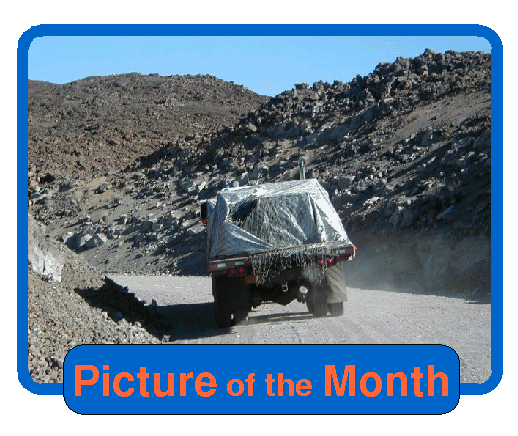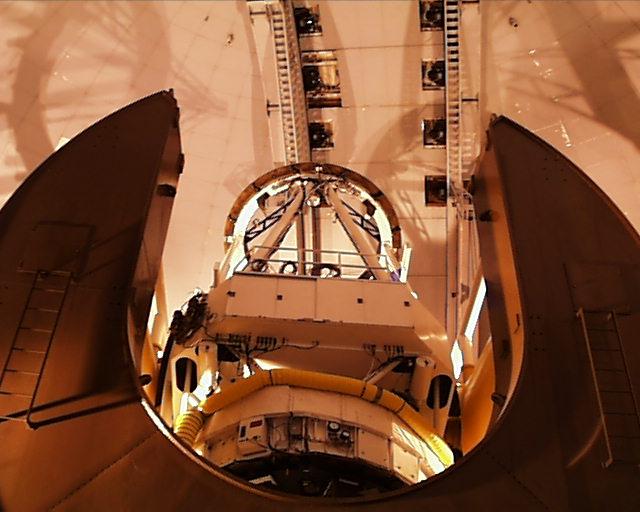












|

|

CFHT
|
The Canada France Hawaii Telescope is Canada's premier optical and
infrared telescope. When it first opened in 1979, its 3.6 metre diameter
mirror made it the sixth largest telescope in the world. Today, many
telescopes have much larger mirrors, but CFHT remains important to
international astronomy because of
its large field of view. Modern telescopes were designed for tiny CCD
chips - they can see very faint things, but only over a small patch of the
sky. CFHT was designed for large photographic plates - by replacing those
plates with a mosaic of CCD chips, astronomers are now able to take
detailed pictures over a large area of the sky.
|
 |
 |
CFHT is located at the summit of Mauna Kea, a dormant volcano on the Big
Island of Hawaii. Mauna Kea rises 4200 metres above sea level - at this
height, the atmosphere is dry and calm, the sky is dark, and the weather
is generally clear. These conditions make Mauna Kea the finest
site for astronomical observations in the Northern Hemisphere. Many other
of the world's best telescopes are located on Mauna Kea, including Subaru,
Keck I and II, Gemini North and JCMT. CFHT is lucky to enjoy one of the
one of the best locations on the summit.
|
|
CFHT is jointly owned and operated by the
National Research Council of Canada, the Centre National de la Recherche Scientifique of
France , and the University of
Hawaii. Astronomers from Canada, France and Hawaii use the telescope
free of charge. Twice a year, researchers submit proposals that outline
what they want to do with the telescope. A committee of scientists
chooses the best programs and divides up the telescope time. Astronomers
will sometimes travel to CFHT to use the telescope themselves - other
times, the data will be taken for them, and they'll receive the results by
mail or over the Internet.
|
 |

MegaCam
|
Instead of using film like an ordinary camera, MegaCam takes its
giant pictures using CCD chips. You can think of the surface of a CCD
chip as a series of buckets. Light coming from the night sky falls into
those buckets - the more light that comes from a particular part of the
sky, the more full the buckets on that part of the chip will be. Once the
picture has been taken, a computer reads out the amount of light in each
bucket and converts it to a digital number. When you display the picture
on a computer, the brightness at each point corresponds to how much light
fell in the bucket at that point. CCD chips are used in most astronomical
cameras today - they are much more sensitive to light than ordinary
photographic film.
|
 |
 |
Instead of one giant CCD chip, MegaCam uses a mosaic of forty chips.
Each
chip measures about three by six cm and has nine million pixels on it -
the "buckets" in the analogy above. This means MegaCam pictures will be
very detailed. They'll also take up a lot of computer memory - each
picture will need over 700 megabytes of memory for storage. That's more
data than will fit on a CD-ROM, just from one picture! To deal
with all the images MegaCam will produce, a data centre called Terapix has been set up. It
will write programs to process MegaCam images and create tools for
astronomers to use when working with the large data sets.
|
This site was last updated on September 28th, 2002.
Comments, suggestions or questions? mlmilne@uvic.ca
|







